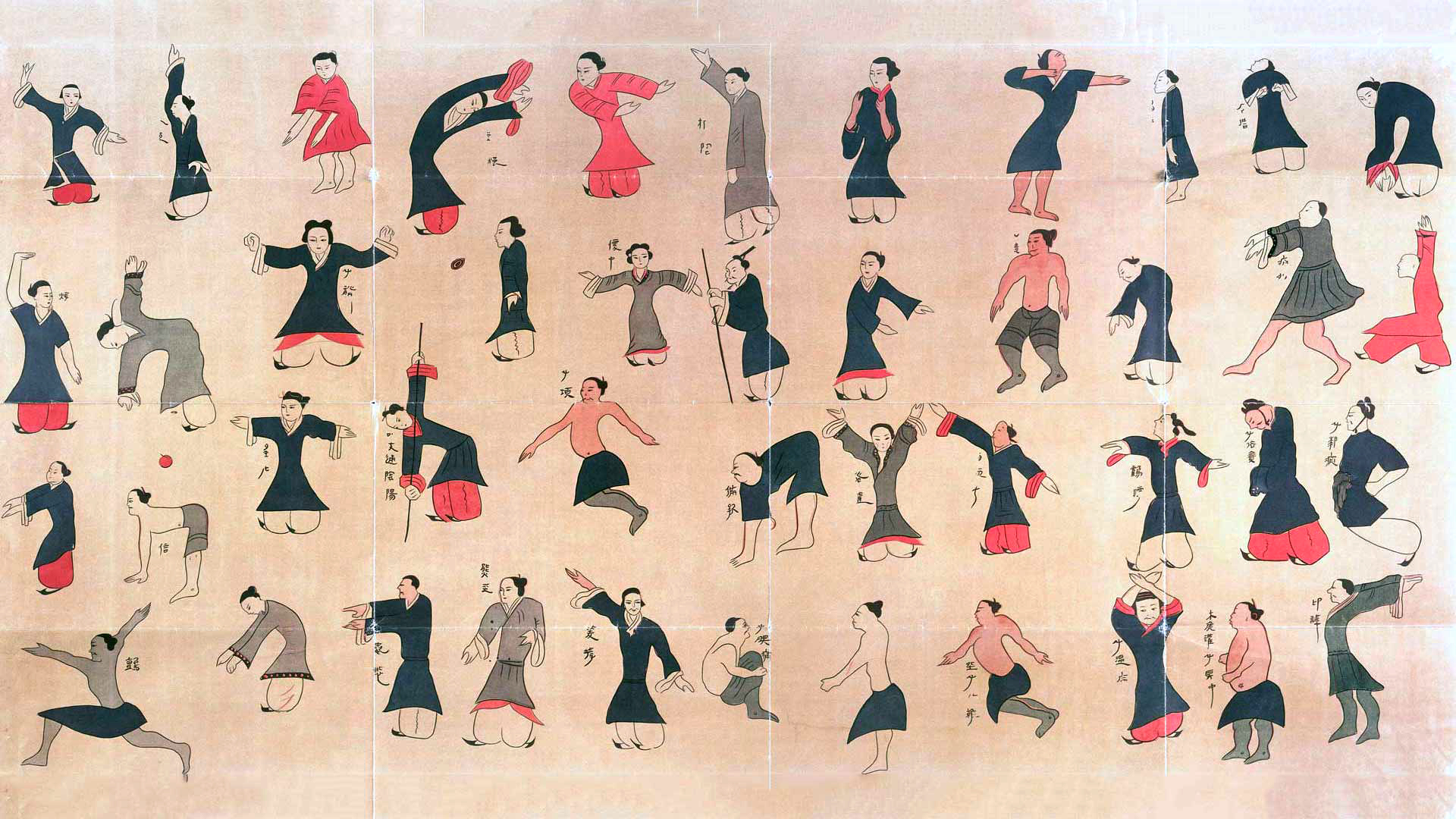History of Qigong and Zhineng Qigong
History of Qigong
Chinese practice of aligning breath, movement, and awareness for exercise, healing, and martial arts training
Origin
Qigong has a history that extends back more than 4,000 years, with roots in ancient Chinese meditative and gymnastic practices.
Influences
Qigong is influenced by philosophical traditions of Confucianism, Taoism, and Buddhism, traditional Chinese medicine, martial arts, as well as contemporary concepts of health, science, meditation, and exercise.
Archaeological Evidence
The first forms of qigong can be linked to ancient shamanic meditative practice and gymnastic exercises, with a nearly 7000-year-old Neolithic vessel depicting early qigong practices.
Qigong is an ancient Chinese practice with a rich history spanning thousands of years. Here’s an overview of its history and benefits:
History of Qigong:
1) Ancient origins: The earliest forms of qigong can be traced back over 4,000 years. Archaeological evidence suggests that shamanic meditative practices and gymnastic exercises from Neolithic times (around 5000-7000 years ago) were precursors to qigong.
2) Early development: The concept of qi (vital energy) was first recorded in the I Ching (Book of Changes) around 1122 BCE. Taoist philosophers like Laozi (around 450 BCE) described breathing techniques in writings like the Dao De Jing.
3) Traditional Chinese Medicine: Qigong became an integral part of Traditional Chinese Medicine, with roots in the Huangdi Neijing (Yellow Emperor’s Classic of Internal Medicine) from around 2600 BCE.
4) Philosophical influences: Confucianism, Taoism, and Buddhism all contributed to the development of qigong practices over the centuries.
5) Martial arts connection: Chinese martial arts incorporated qigong principles, with famous figures like Bodhidharma (ca. 500 CE) introducing exercises to Shaolin monks.
6) Modern era: The term “qigong” was established in 1949 by Liu Guizhen. After initial restrictions during the Cultural Revolution, qigong gained immense popularity in China during the 1980s and 1990s.
7) Global spread: Qigong began to spread internationally in the 1990s, gaining recognition worldwide through conferences, research, and publications.
Benefits of Qigong Practice:
1) Health improvement: Qigong is believed to enhance overall health and well-being by balancing and cultivating qi (vital energy).
2) Stress reduction: Regular practice can help reduce stress and promote relaxation.
3) Physical fitness: Qigong exercises improve flexibility, balance, and strength.
4) Mental clarity: Practitioners often report improved focus and mental clarity.
5) Emotional balance: Qigong is said to help regulate emotions and promote emotional well-being.
6) Longevity: Historically, qigong has been practiced as a method to extend lifespan and improve quality of life.
7) Preventive medicine: In Traditional Chinese Medicine, qigong is used as a preventive measure against illness.
8) Complementary therapy: Qigong is often used alongside conventional medical treatments to support healing and recovery.
9) Spiritual growth: For some practitioners, qigong serves as a path for spiritual development and self-cultivation.
10) Community building: Group qigong practice can foster a sense of community and social connection.
Qigong’s long history and diverse influences have resulted in a rich tradition that continues to evolve and adapt to modern needs. Its holistic approach to health and well-being has made it increasingly popular both in China and around the world.
How has Qigong evolved over the centuries
Qigong has evolved significantly over its long history, adapting to changing cultural, philosophical, and scientific contexts while maintaining its core focus on cultivating qi (vital energy). Here’s an overview of how qigong has evolved over the centuries:
1) Ancient origins (5000+ years ago):
• Emerged from shamanistic practices and animal-inspired movements
• Early forms focused on health preservation and longevity
2) Formalization in ancient China (2500-2000 years ago):
• Incorporation into Taoist philosophy and practices
• Development of breathing techniques and meditative practices
• Integration with Traditional Chinese Medicine concepts
3) Classical period (500 BCE – 500 CE):
• Influence of Confucianism, Taoism, and Buddhism
• Refinement of theories about qi and its circulation
• Incorporation into martial arts training
4) Medieval period (500-1500 CE):
• Further development of medical qigong practices
• Influence of alchemical traditions
• Creation of complex qigong systems by various schools
5) Early modern period (1500-1900):
• Synthesis of various qigong traditions
• Increased focus on spiritual and mystical aspects
• Integration with traditional Chinese medicine practices
6) Modern era (1900-present):
• Attempts to scientifically validate qigong practices
• Simplification and standardization of some forms for mass practice
• Spread to Western countries and global popularization
7) Contemporary developments:
• Integration with modern exercise and wellness trends
• Adaptation for specific health conditions and populations
• Use of technology for teaching and practice (e.g., online classes)
Key evolutionary aspects:
1) Terminology: The term “qigong” itself is relatively modern, coined in the 20th century. Earlier practices were known by various names like daoyin, neigong, and yangsheng.
2) Secularization: While originally closely tied to spiritual and religious practices, many modern forms of qigong have been secularized for broader appeal.
3) Scientific approach: In recent decades, there have been efforts to study qigong from a scientific perspective, leading to more evidence-based practices.
4) Diversification: Qigong has diversified into numerous styles and schools, each emphasizing different aspects (e.g., medical, martial, spiritual).
5) Globalization: As qigong spread beyond China, it has been influenced by and adapted to different cultural contexts.
6) Standardization efforts: In China, there have been attempts to standardize qigong practices, particularly in medical settings.
7) Integration with other practices: Qigong has been increasingly combined with other health and wellness practices, both Eastern and Western.
Throughout its evolution, qigong has maintained its core principles of cultivating qi through coordinated movement, breathing, and mental focus, while adapting to changing societal needs and understandings.

